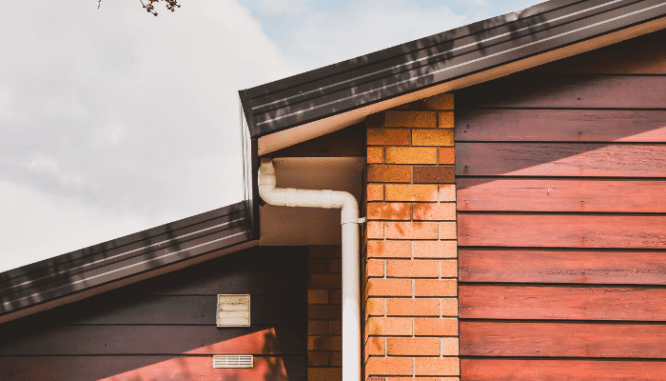Buying a house is always an emotional cocktail of excitement and stress, but doubly so when it’s a new-construction home. Sure, you’ll be the first to move in, and everything will be fresh and unused — but this also means that no one has lived there long enough to discover the quirks and possible oversights that may have occurred during the long process of construction.
Since it’s tough to know exactly what to look for before taking the keys to your new home — especially if this is your first time building a house — we’re here to help. Along with Cassie Scramlin, a top agent and new construction expert in Battle Creek, Michigan, we’re taking you through a comprehensive new home inspection checklist and offering a few bonus tips on what to keep an eye out for during your final walkthrough.
Let’s go through this together.

Home inspections vs. walkthroughs
If you’ve bought a house before, you probably ordered a home inspection shortly after your purchase offer was accepted. This is standard practice, and it’s always a good idea as there’s no better way to find out what you’re getting yourself into with an unfamiliar home — plus, the inspection process can be a great negotiation tool!
Depending on the repairs that you and the seller may have agreed to move forward with following your review of the inspection report, you may have also completed a final walkthrough. Walkthroughs serve as one last check before closing; they are a way to see for yourself that a repair has been completed as promised and to otherwise confirm that the home is still in the same condition as when you agreed to buy.
With a newly constructed home, the core elements of both exercises are the same, but there will be multiple inspections along the way, and even greater anticipation surrounding the final walkthrough.
Who completes new home inspections?
While most licensed home inspectors are likely capable of completing each of the inspections we’re about to cover, it’s worth hiring someone who either specializes in or frequently works with new-construction homes. These experts will be familiar with the nuances of the construction process and what happens throughout each phase.
To find a suitable inspector, ask your real estate agent for a referral, or you can Google “new home inspector [your city]” as a starting point.

First up: The new home pre-pour inspection
Aside from any land grading that may have occurred in preparation, the pre-pour inspection is the first opportunity to raise a critical eye before construction gets into full swing. It’s called the “pre-pour” inspection because it occurs before the concrete is poured for the slab, but after the key foundational components are in place.
This inspection considers:
- Elevation, drainage, and grading
- Trenches and soil
- Water lines
- Plumbing and pipes
- Drain, waste, and vent lines
- Foundation forms and bracing
- Placement of plastic vapor barriers
- Beam sizes and structural cable systems
Foundation repairs are costly, so it’s important to ensure that structural supports and piping are properly installed and capable of functioning before they’re covered in concrete.
Second: The framing inspection
Once the foundation is poured and cured, it’s time to start framing out the house. This is when the actual structure takes shape — usually in the form of a wooden frame for residential housing.
A comprehensive framing inspection will look at:
- The frame itself, which includes everything from interior load-bearing studs and beams, to the nails, screws, and plates used to secure framing components
- Stairwells
- Water-resistive barriers
- Window installation and flashing
- Fireblocking
- The thermal envelope and air barrier
- Electrical systems
- Plumbing systems
- HVAC and ductwork
The framing inspection is important because, as with the pre-pour inspection, many of these systems and components are about to be covered by insulation and drywall. Repairs or adjustments won’t necessarily be impossible after the fact, but they’ll certainly be more complicated and costly.
“Out of sight, out of mind” is not the mantra we’re looking for when it comes to building a home!

Third: The final inspection
Depending on your new home’s construction timeline and the policies of your builder, you may have the opportunity for periodic walkthroughs during the construction process.
These will usually be informal, just-to-look-and-see visits, and you may not always know exactly what you’re looking at when you see various wires and pipes, but these mini-walkthroughs can offer valuable perspective on the development of your home and help you feel more connected to the homebuilding journey.
When construction is finished and the home is nearly ready for move-in, it’s time for the final inspection. Ideally, this inspection should take place at least a few days before your own final walkthrough so that any concerns can be addressed before it’s your turn to sign off on completion.
The final new-home inspection will consist of a thorough review of the house both inside and out.
Outside, your inspector will check:
- How the ground slopes away from the house (very important for drainage!)
- Gutters and downspouts
- Roof shingles
- Siding
- The driveway
- Fencing
- Sheds or other structures
In particular, Scramlin advises that homebuyers be sure the inspector thoroughly checks the roof, lest your brand-new home’s attic be infiltrated by water the first time it rains after you move in.
“There could be nails sticking up, or shingles that aren’t laid right, and these would go on what we call the ‘tick list’ that you’ll go back to the builder with to say that these items still need to be fixed,” she says.
Inside the home, the inspection will cover:
- The foundation and basement (if applicable)
- The HVAC system
- The electrical system
- Plumbing and water heater
- Fire and security systems
- Interior finishes (flooring, wall coatings, trim, and so on)
- Outlets, lights, and ceiling fans
- Windows and doors
- Cabinets and counters
- Appliances (if included in your construction package)
- Sinks, tubs, and showers
- The attic
In short, the interior inspection checks that everything has not only been properly installed, but that it also functions safely and as intended.
“I’ve had clients who’ve found during a new home inspection that electrical plugs aren’t grounded correctly, or the hot and cold water taps are transposed,” says Scramlin.
“When they’re building so quickly and they have crews coming and going all the time, it’s easy for something to be incorrect.”
Scramlin also cautions that, in many cases, the warranty for a new-construction home is limited to structural issues. Which means that if you move in and notice two weeks later that the half-bathroom in your finished basement has a cracked tile, the builder isn’t necessarily on the hook to replace it for you.
What happens if the inspector does find a problem?
As Scramlin mentioned, after your new home’s inspection you’ll have the opportunity to compile a list to take to your builder and essentially say, “Please fix this.”
Requests can range from major fixes — like replacing any damaged roof shingles or rewiring improperly grounded electrical outlets — to smaller corrections, such as shoring up loose trim around the front door, tending to a bathroom ventilation fan that fails to turn on, or adjusting the pull-down attic door so it sits flush with the ceiling.
Post-inspection repairs on a new-construction home should be a fairly quick process. The work won’t have to be scheduled to accommodate your daily life as it would if you were already moved in, and crews and equipment are typically on hand until the home is signed off on as a completed project.
Nonetheless, don’t be shy about delaying your final walkthrough if, say, it’s scheduled for next Tuesday, and the builder is telling you they won’t be able to complete repairs until the following Friday.
In fact, it’s often worth bringing in the inspector for a follow-up — especially if the repairs were significant.
“Rather than just being satisfied that the builder says, ‘Yeah, these [repairs] are done,’ see if the home inspector can go back and check the checklist to make sure all of those items were completed,” advises Scramlin.
This isn’t a matter of lacking trust in your builder — your new home is a serious investment, and you have every right to ensure that it was constructed correctly and to a high standard of quality.

It’s time for the final walkthrough: Now what?
So the repairs have been completed, the new home inspector has given you the green light that everything is in order, and it’s time for your final walkthrough as the buyer.
This is an exciting time for sure — you’ll be moving in soon! — but try to stay objective through this last step. Home warranties aside, this is your last chance to take notice of any minor fixes you’d like the builder to address before you take possession.
Here are a few things you may want to keep in mind:
- Paint flecks can be a visual nuisance. Look carefully over flooring, trim, cabinets, and in corners to make sure there aren’t unwanted speckles, drips, or smears.
- Check tile and grout for cracks, chips, color consistency, and cleanup.
- Check all caulking to ensure there’s a proper seal and no extra smears or globs.
- Test your windows to make sure each one opens and closes smoothly.
- Do the same with any sliding doors.
- If you have a garage, make sure the garage door opens and closes properly.
- If you have an attic, crawl space, cellar, or any other area that is accessible but likely to see infrequent use, be sure you can easily open and fully secure the door, and that there are no errant tools or construction leftovers.
- Though probably covered during the formal inspection, double-check the functionality of any electrical extras. Think illuminated mirrors, under-cabinet lighting, in-drawer outlets, and so on.
- Poke your head into closets to make sure the space hasn’t been used and forgotten about as casual storage for the construction crew, and that any expected rails, poles, or shelving are in place.
- If you are due any extra tiles or flooring for use as future replacements, be sure that those additional pieces are on-site and stowed away.
Finally, ask your builder for clarification on what you can and can’t revisit with them after moving in. If you notice something out of sorts within the first 30 days of taking possession of the home, it’s nice to know whether your builder has your back or if you’ll need to tend to the issue on your own.
Be sure that you also have all the paperwork and correct contact information should you need to reach out in regards to your home’s structural warranty, along with any required disclosures or other notices from the builder.
Just as with the final inspection, if your walkthrough uncovers any last-minute needs, be sure to put them in writing and have someone from the construction team acknowledge your requests. Since these are usually small fixes involving just a bit of clean-up or minor attention, your builder should be eager to resolve the issues as quickly as possible and receive your final sign-off.
Ready, set, move-in!
After the long journey that is the new-construction process, it’s a huge relief to accept the keys and finally be able to settle in. No doubt you’ll be busy cleaning away construction dust and preparing for moving day, but the peace of mind that comes from knowing your new home was thoroughly inspected every step of the way should be a big relief.
Header Image Source: (Olga Subach / Unsplash)


